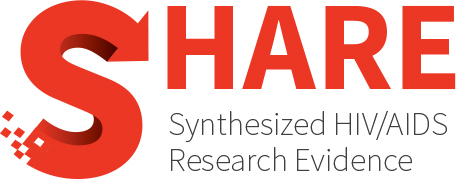Category Archives: Heterosexual men
Psychosocial interventions enhance HIV medication adherence: A systematic review and meta-analysis
About 40 per cent of people living with HIV do not sufficiently adhere to their medication regimen, which adversely affects their health. The current meta-analysis investigated the effect of psychosocial...
Male circumcision for the prevention of human immunodeficiency virus (HIV) acquisition: A meta-analysis
We aimed to assess male circumcision for the prevention of human immunodeficiency virus (HIV) acquisition in heterosexual and homosexual men using all available data. A systematic literature review was conducted...
The impact of approaches in improving male partner involvement in the prevention of mother-to-child transmission of HIV on the uptake of maternal antiretroviral therapy among HIV-seropositive pregnant women in sub-Saharan Africa: A systematic review and m
OBJECTIVES: To identify the approaches that are used in improving on male partner involvement in the prevention of mother-to-child transmission (PMTCT) of HIV and their impact on the uptake maternal...
What leads some people to think they are HIV-positive before knowing their diagnosis? A systematic review of psychological and behavioural correlates of HIV-risk perception
Current HIV-risk perception refers to the extent to which individuals think they might be HIV-positive. This belief, distinct from the perceived risk about being infected with HIV in the future,...
Association between male circumcision and women’s biomedical health outcomes: A systematic review
BACKGROUND: Male circumcision reduces men’s risk of acquiring HIV and some sexually transmitted infections from heterosexual exposure, and is essential for HIV prevention in sub-Saharan Africa. Studies have also investigated...
Does being drunk or high cause HIV sexual risk behavior? A systematic review of drug administration studies
HIV sexual risk behavior is broadly associated with substance use. Yet critical questions remain regarding the potential causal link between substance use (e.g., intoxication) and HIV sexual risk behavior. The...
Examining the health and health service utilization of heterosexual men with HIV: A community-informed scoping review
The prevalence of HIV infection among heterosexual men has increased. Consequently, the need for health and support services for this group is likely to increase. We conducted a scoping review...
HIV, other blood-borne viruses and sexually transmitted infections amongst expatriates and travellers to low- and middle-income countries: A systematic review
In some high-income countries, a proportion of human immunodeficiency virus (HIV), other blood-borne virus (BBV) or sexually transmitted infection (STI) diagnoses have been reported as acquired overseas in low- and...
Towards ‘reflexive epidemiology’: Conflation of cisgender male and transgender women sex workers and implications for global understandings of HIV prevalence
The HIV epidemic has had a widespread impact on global scientific and cultural discourses related to gender, sexuality, and identity. ‘Male sex workers’ have been identified as a ‘key population’...
